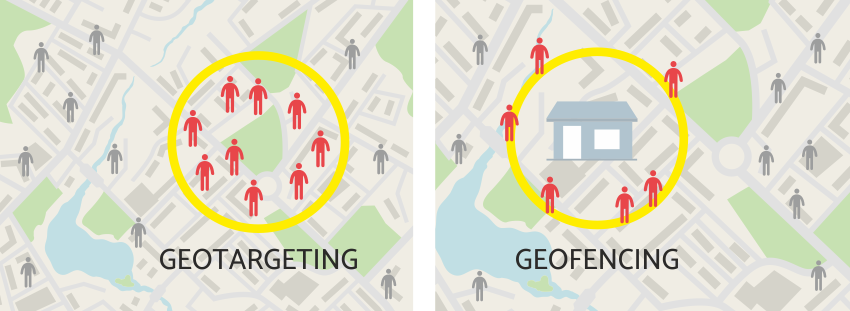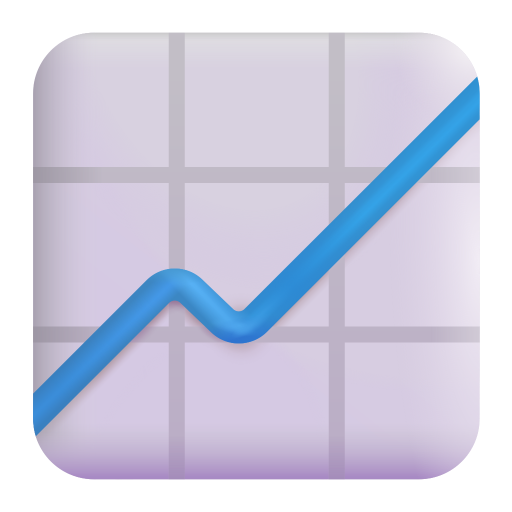Push notifications are one of the most powerful tools that marketers have these days. And nothing can explain this better than the words of Ariel Seidmann, founder of Hivemapper.
It’s hard to overhype the power of mobile push notifications. For the first time in human history, you can tap almost two billion people on the shoulder and say “hey! pay attention to this!”
When this power is combined with that of geofencing – the marketing magic happens in the form of highly personalized customer experiences. In this blog post, you’ll learn how you can deliver those experiences using geolocation targeting in your push notifications.
Let’s brush up on some basics.
What is geolocation marketing?
Geolocation marketing means using the location data of a person to plan and implement marketing communications. To collect this sort of data, your users need to enable location services first. This data is then captured using various channels like GPS, IP address, Bluetooth, WiFi, or cell towers.
Brands have been using it to display location-specific content on their social and web channels, target specific users of a location, and for research purposes. As a channel, push notifications bring the best of both worlds together. They help reach the customer just at the right time, at the right place, with the right message.
But first.
How does geofencing push notifications work?
Geolocation or geo-triggered push notifications are sent to users using data of their past or current location. These notifications can be triggered when they enter or exit a certain geographical area, i.e., a city, a region, or a country, or to retarget them.
They’re great for informing users about nearby events and promotions, date matches, recommending stores or restaurants, or sending them alerts. For example, a coupon or deals app can inform their users about any discounts or deals on nearby restaurants.
Ways to use geolocation targeting in push notifications
There are different ways to target users and send push notifications through geolocation. Among them, the most popular ones are:
Geofencing
Geofencing allows you to create a virtual geographic periphery. Using this type of targeting, you can send messages to users when they enter or exit a certain area or are close to a specific location.
The idea is that the user is on the move and might benefit from receiving messaging as they cross a designated virtual boundary. It allows you to narrow your targeting to all those users who are close to a specific location in real time.
To make use of geofencing, define a virtual boundary around a specific location using a GPS or RFID-enabled software solution.
Note: this type of targeting requires a hard opt-in from your users.
It can be useful for connecting with your most loyal customers to reinforce brand awareness, drive promotions, and delight them.
| Benefit | Downside |
| Allows marketers to target users who step-in their “fence” immediately in real-time | High probability of targeting users who merely happen to graze off the fence |
| Great for brand awareness campaigns | Requires a hard opt-in from users |
| Doesn’t require collecting first-party data | Cannot target users after they have left the geofence |
Geotargeting
Geotargeting is also another way to limit your marketing message to a specified region but it takes it one step further from geofencing. It only targets users who enter inside of a defined geographic area (city, zip radius) and who also meet certain criteria based on their usage behavior for your app.
While the idea of geotargeting seems simple, many marketers find it difficult to execute.
Note that Facebook found itself in an ad crisis by allowing advertisers to discriminate in housing, jobs, and credit. It’s important to practice caution while using this targeting for credibility. Once lost it’s hard to earn again.
| Benefit | Downside |
| Allows hitting a specific target customer in a defined geographic location | Limits the audience reach to a niche segment |
| Great for re-engagement, promotional and customer delight campaigns | |
| Requires a hard opt-in from users |

Geoframing
Geoframing was introduced in 2017 and relies largely on the framework of geofencing but only takes it further by allowing targeting down to the meter-squared level.
This gives marketers access to a more granular level of targeting and removes users who happen to merely pass through the geoframe.
While geofencing allows you to take in real-time data, geoframing collects historical data of mobile user IDs and targets users who were found to be at the specified location at a given time.
Meaning you can target an audience who visited a cafe multiple times in the last six months and remind them about having a coffee once they’re close to your geoframe.
| Benefit | Downside |
| Allows targeting users in real-time as well when they get back home (basis data up to 6 months ago) | Viewers passively opt-in via the ad exchange |
| Doesn’t require soft opt-in from users | |
| Great for retargeting, upselling, and cross-selling campaigns |
How to use geotargeting in push notification campaigns
You can be as creative as you want and use it in various ways. Whichever gets you wins, take that route. Some of the use cases as of now are:
Ecommerce
- By geofencing around specific stores, ecommerce brands can inform users about online discounts and share recommendations and reviews.
- Apps may find it useful to geotarget users of a specific neighborhood and send them coupons or information about nearby deals and offers.
- An eCommerce clothing business can identify users who visit stores of a certain brand the most using geoframing and suggest relevant products.
Retail
- A clothing store like M&S can use geotargeting to send the latest trend alerts of specific geolocation to its most loyal users on the basis of their wish list and viewing history.
- They can also send target users who are in their store using geofencing and offer special discounts and coupons.
- They can use geoframing to reach people who visited their competitor within the last one month and offer discounts.
Travel
- Travel businesses can send geofence to a specific location and send recommendations on where to stay, what to see, where to shop, etc.
- They can geotarget users who just landed at the airport to inform them about nearby cab options, hotels, and traffic alerts.
- Travel apps can also use geoframing to target who visited a specific location, event, or festival.
FoodTech
- A restaurant can collect valuable feedback from their customers as they leave the “fence.” It can offer them a discount on their next visit for filling out the survey.
- A cafe like Starbucks can geotarget their regular customers to send a nudge about a discount or offer of the day.
- Using geoframing, they can reach out to users who were present at a certain food festival or on a special event at their restaurant and inform them about future special events.
Best practices for using geolocation in push notifications
- Check the industry fit: Identify the fitment of geolocating push notifications for your industry and set goals and expectations regarding results accordingly. Not every app is suited for this type of communication, and not every customer will find them useful. Think through these details before setting out with your strategy.
- Get the timing right: One of the most common mistakes that marketers make with geolocating push notifications is asking customers for permission to share location data right at the beginning of their journey. In the wake of recent data security scams, customers have become wary of sharing such sensitive data with apps. As such, think of an opportune time to request their permission. Ideally, this would be at a time when they have used their app enough and start coming back to it regularly.
- Define clear value and purpose: Simply asking customers to share their location data doesn’t help much in driving opt-ins. Location remains a very crucial set of information for users. If you explain to users why you need their location data and the value of your notifications, this can improve your opt-in rate. Make sure the value and purpose of your push notifications come out clearly in your request.
- Never be a creep: For example, if a user happens to be near your clothing store, you can send them a message informing them of a discount available in the store. The idea is to be subtle and not push them to engage with you by going out of the way.
- Be mindful of frequency: Attention is a scarce resource these days. There are too many things asking for our attention and too many decisions to be made. Result? Most of us feel exasperated. The idea that brands can reach out to users at any moment in time has turned attention into a cheap commodity. And we need to be mindful of it.
Final Thoughts
The power of geolocating push notifications provides you with unique benefits. It opens up various possibilities for you which until recently were unimaginable as you can put yourself in front of your user right when they’re in the market.
And the technology at the back of it is only expected to get better in the future. With this, I envision more and more marketers to focus on delivering completely personalized experiences to users.
To learn more about Netcore’s Push Notification channel, and how can it help you deliver geo-location powered personalised campaigns, get in touch with us today.
 Holiday Sales Are Won Now — Grab the 2025 Holiday Marketing Guide to Unlock More Revenue.
Holiday Sales Are Won Now — Grab the 2025 Holiday Marketing Guide to Unlock More Revenue. 








